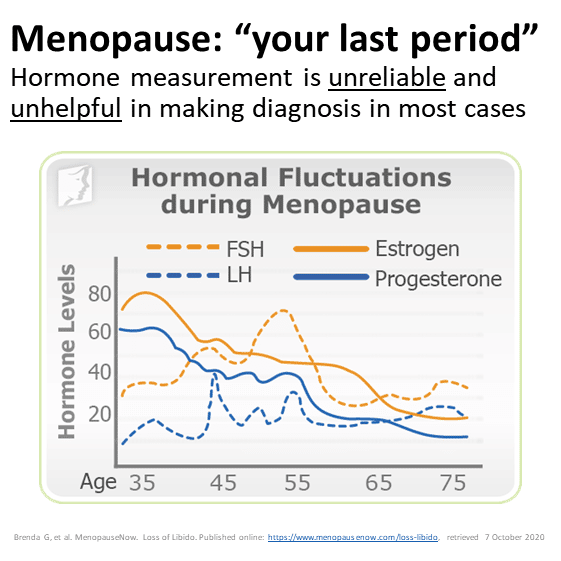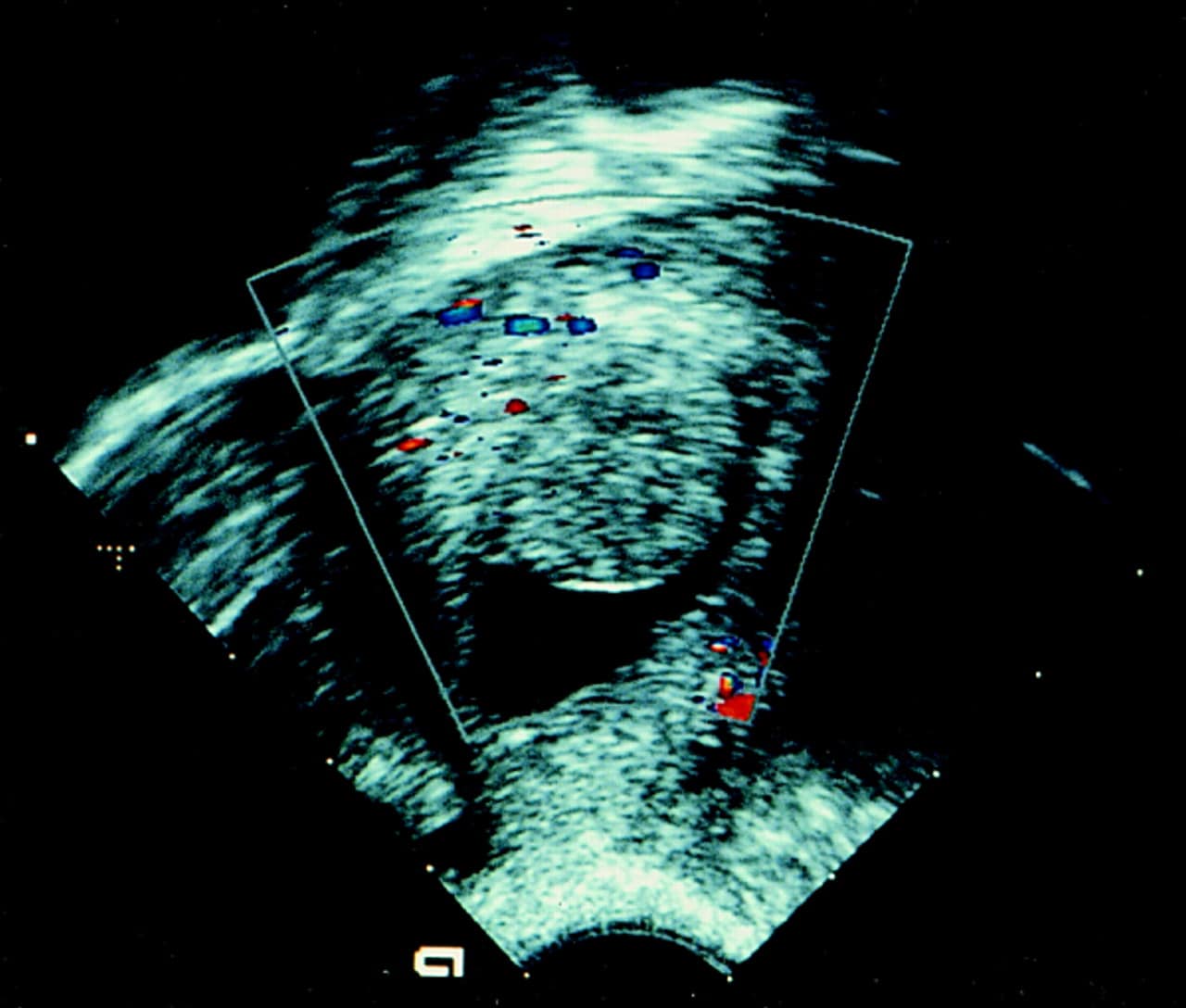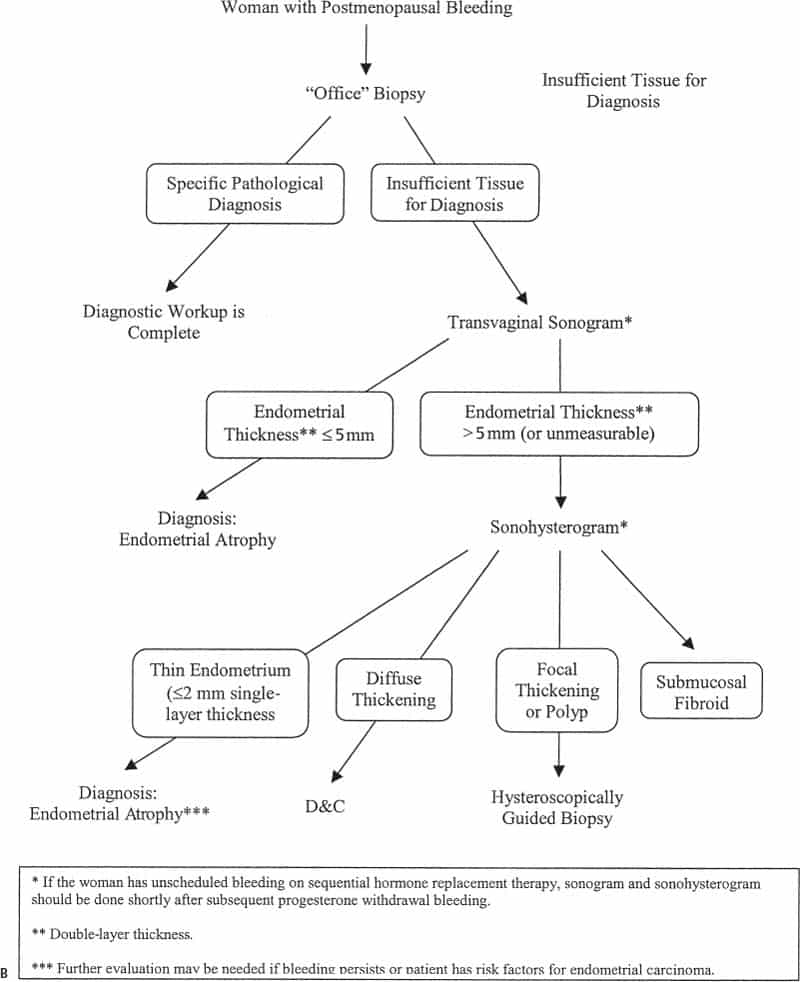Is There A Way To Prevent The Problems That Cause Spotting
Menopause is different for every woman. You cant prevent most of the problems associated with spotting. But there are some things you can do to get an early diagnosis and treat them before they get worse, including:
- Getting a yearly checkup. If youre at high risk for cervical or uterine cancer, ask your doctor how often you should get a Pap smear and pelvic exam.
- Reporting unusual discharge, spotting, or bleeding to your doctor right away, especially if accompanied by pain or other symptoms.
- Telling your doctor if intercourse is uncomfortable or painful.
Endometrial Modifications With Hormone Therapy
In the abnormal menstrual cycle, the diameter and total glandular area of the endometrium are greater than those seen in the normal cycle even though the stromal cellularity remains unaltered in the luteal phase. If the progestogen dose is unbalanced or high in any HT regimen, the result is small total area and glandular diameter, lower height of the glandular epithelium, reduced glandular secretion, a lower number of microvessels, and a higher number of dilated venules. All of these modifications facilitate abnormal bleeding.20 Therefore, in HT, the progestogen dose should be high enough to inhibit glandular cell division without causing secretory modifications. It must be considered that there are different endometrial responses to the same regimens among individuals, however. Concerning the type of progestogen, it appears that levonorgestrel, desogestrel, and medroxyprogesterone acetate when given in low doses do not reduce the estrogen receptors, but the expression of progesterone receptor density may suffer significant alterations with the different regimens of HT.21
Side Effects Of Hormone Replacement Therapy
If youre going through menopause, hormone replacement therapy might be on your mind. This involves taking doses of female sex hormones: estrogen, progesterone, or both. HRT is used to ease the unpleasant symptoms that are typically associated with menopause.
This phase is a normal part of aging. It typically happens between the ages of 45 and 54, and its marked by a drastic drop in estrogen and progesterone. As a result, you might have hot flashes, vaginal discomfort, and mood swings. Your risk for osteoporosis also shoots up.
HRT can reduce these symptoms. However, with that relief comes lots of side effects. Depending on your pre-existing conditions, HRT may or may not be right for you. Before you take the dive, learn about the risks and side effects of hormone replacement therapy.
Read Also: When Should You Start Taking Hormone Replacement Therapy
Can Bioidentical Hormone Therapy Cause Bleeding
Are you wondering if hormone therapy can cause bleeding?
Maybe you recently started hormone therapy and you’re on conventional hormone therapy through a typical chain pharmacy, or maybe youre on bioidentical hormones, or maybe youre on pellet therapy.
The question for all these is, can they ” hormone therapy” lead to bleeding? The answer is yes.
We treat a lot of patients with hormone therapy but the goal typically is not to cause bleeding. So if this is occurring we want to look at why and then take a step back. You may need a dose adjustment or things like this. In this post we’re going to discuss those things as well as some things to be thinking about, in conjunction with your doctor. You don’t want to ignore this and you do want to bring it to their attention. The prescribing doctor of the hormone should know this so that you’re not missing things. in this video we’re going to discuss all that ok
Not Sure What To Do Next

If you are still concerned about bleeding after menopause, use healthdirects online Symptom Checker to get advice on when to seek medical attention.
The Symptom Checker guides you to the next appropriate healthcare steps, whether its self care, talking to a health professional, going to a hospital or calling triple zero .
Read Also: Do Soy Isoflavones Increase Estrogen
Supporting A Healthy Hormone Balance
Our surroundings are constantly waging chemical warfare on our bodies, and it is imperative that we give our bodys functional systems the best chance they have at winning the battle. Chemicals known as endocrine disruptors are found in everyday objects such as toys and plastics, so they are difficult to avoid. Nonetheless, there are many ways we can support our hormones both before and after replacement therapy.
Where Hrt May Be Riskier
There are some medical conditions where HRT may be too risky. We cant list all the medical conditions here, but they include uncontrolled high blood pressure, active liver disease, active medical conditions where the risk of blood clotting is very high, after certain cancers, where you have abnormal vaginal bleeding that has not been investigated.
The benefits and risks of HRT are different for everybody and it is important that you talk through your situation with a menopause specialist. Its also important to discuss your medical history in full before thinking about starting HRT.
Recommended Reading: Does Testosterone Make You Last Longer In Bed
When Do Results Become Evident
Each individual will experience the results of bioidentical HRT differently, which also means their time frames for symptom relief differ as well. Some symptoms may be impacted immediately, while others may improve steadily over a period of three to six months. You can expect to reach normal levels of hormones within six months of starting your regimen. Again, this time frame varies from person to person, but let us know if youre not getting any relief from symptoms at all.
What Is Breakthrough Bleeding
Simply put: Breakthrough bleeding refers to vaginal bleeding that occurs when its not supposed to, typically when youre in between periods, Dr. Minkin says. Breakthrough bleeding is also sometimes called spotting. It typically resembles the blood youd see at the beginning or end of a period: light red or brown.
In general, its nothing to be concerned about, Dr. Minkin says. But if it starts happening regularly, like every month, it can be a sign that somethings up and you should see your doctor.
Dont Miss: How Much Will Clomid Raise Testosterone
Read Also: How To Balance Cortisol Hormone
Histological Aspects Of The Endometrium Under The Influence Of Hormone Therapy
Atrophic, inactive, proliferative, early secretory, late secretory, and hyperplasic endometria have been reported in HT users of different regimens. Endometrial biopsies have been performed both in the absence of and during bleeding episodes. Comparison of the biopsies found in bleeding patients with those performed in patients with no bleeding, under the same regimens of HT, have not shown different results. In those patients with abnormal bleeding, biopsies have shown atrophic , proliferative , hyperplastic , secretory , carcinomatous , hyperplastic associated with cancer , and dysfunctional abortive , endometria.
In general, partial or complete secretory transformation occurs in most patients receiving the combined sequential regimen,, and biopsies performed during the progesterone phase have shown endometria weakly secretory, secretory , proliferative , inactive , atrophic , dysfunctional , or hyperplastic . In the users of the combined continuous regimen, biopsies have shown endometria atrophic in 26% to 69%, proliferative in 13%, dysfunctional in 5%, or hyperplastic in 2% to 5%. Nevertheless, adding the results of biopsies with atrophic endometrium plus those with insufficient material for analysis, the percentage increases up to 90% of cases. The presence of endometrial polyp or other endometrial pathology have been reported in 7% to 8% of cases, regardless of which regimen is used.,
Recommended Reading: How To Raise Free Testosterone Naturally
Management Of Abnormal Bleeding During Combined Sequential Hormone Therapy
Sequential HT is also recommended in the premenopause and perimenopause periods, while some ovarian activity still is present.71 The most common preparations used in this regimen are shown in Table 3. Differences between menstruation and progestogen withdrawal bleeding are probably due to endometrial exposure to different estrogen or progestogen types, relatively low estrogen endometrial exposure in HT, and continuation of estrogen administration without decreasing it through the bleeding phase. After the progestin sequence withdrawal, the continual ingestion of exogenous estrogen at the correct dose guarantees re-epithelization of the endometrium and cessation of the bleeding within a few days.7,26,70,75
Also Check: How To Reduce Dht Hormone
Should You Be Worried About Postmenopausal Bleeding
You’ve endured the hot flushes and the mood swings. You’ve survived the heavy, irregular bleeding. Once you come out the other side, maybe the menopause isn’t so bad – after all, you don’t have to put up with periods every month. But then you start bleeding again, and you’re not sure if it’s normal.
Reviewed byDr Hayley Willacy
17-Apr-18·3 mins read
Sound familiar? If it does, you’re in good company. Bleeding after the menopause is remarkably common, and accounts for 1 in 20 of all referrals to gynaecologists.
When To Be Concerned

Most women know their bodies and can recognize when something changes. Seek medical care with any of the following:
- Bleeding accompanied by fever, chills, nausea, and pain.
- An unpleasant odor from vaginal discharges.
- Bleeding in young girls prior to puberty.
Most sporadic spotting between periods is usually not cause for alarm, but it is always best to err on the side of caution. If you have any further questions, or would like to set an appointment with Mid-City OB-GYN today, call 397-6600 to schedule an appointment.
Read Also: Where To Get Estrogen Cream
Recommended Reading: How To Replace Testosterone Naturally
Bleeding In A Woman Taking Mht
Bleeding on cyclical MHT
In the woman who is taking cyclical MHT, a withdrawal bleed is expected and the patient should be counselled to expect it. It should come toward the end of or after the progestogen containing phase of the cyclical regimen. Bleeding which is unpredictable, occurring not at the expected time, or excessively heavy should be investigated.
Bleeding on continuous combined MHT
Continuous combined MHT contains oestrogen and progestogen throughout the month and is designed to eliminate vaginal bleeding. Continuous exposure to progestogen downgrades oestrogen receptors in the endometrium whilst treating menopausal symptoms with oestrogen. In the postmenopausal woman taking CCMHT, the significance of breakthrough bleeding depends upon the recency of her LMP and on how long she has been taking CCMHT. A similar diagnostic and therapeutic approach applies to tibolone.
Within 12 months of the last menstrual period
Women who are within 12 months of the last natural menstrual period often do not achieve amenorrhoea with CCMHT, presumably because some residual endogenously oestrogen-stimulated endometrium is present. Unpredictable breakthrough bleeding is common in this situation and does not need investigation. To avoid this, it is recommended that cyclical MHT be used for the first 12 months at least following the LMP.
After 12 months since the LMP and within six months of the institution of CCMHT
After 12 months since the LMP and after six months of CCMHT
How Does Hrt Work
Before the menopause, your ovaries produce three main types of hormones:
Its the loss of oestrogens that results in most menopause symptoms. And while all womens testosterone levels gradually decline from our 30s, this has an impact on some of us and not on others. You can find out more about testosterone here.
Put simply, HRT aims to replace the declining levels of oestrogen that your ovaries used to make and this, in turn, helps to reduce your menopause symptoms. It also has long-term health benefits, more crucial than ever as womens life expectancy is increasing.
Don’t Miss: Foods That Help With Hormone Imbalance
Examining Endometrial Cancer Worldwide
To get a comprehensive picture of the relationship between endometrial cancer and postmenopausal vaginal bleeding, researchers led by DCEGs Dr. Clarke and Nicolas Wentzensen, M.D., Ph.D., performed a meta-analysis of 129 studies, which included more than 40,000 women. Data for the studieswhich were conducted in Europe, North America, and Asiawere collected between 1977 and 2017.
The researchers estimated the overall prevalence of endometrial cancer among women with postmenopausal bleeding across all the studies combined and within different regions of the world. They also examined whether factors such as use of hormone replacement therapy affect the prevalence of endometrial cancer.
Overall, the analysis showed that, consistent with what had been seen in earlier studies, 90% of women diagnosed with endometrial cancer had experienced postmenopausal bleeding.
The number of women with postmenopausal bleeding who were diagnosed with endometrial cancer varied around the globe. While the rate was 9% overall, it ranged from 5% in North America to 13% in Western Europe.
Among the studies included in the analysis, the risk of endometrial cancer in women with postmenopausal bleeding was lower in studies that included women using hormone replacement therapy. This may be due, in part, to the fact that hormone replacement therapy itself can cause bleeding, especially during the first 6 months of use, explained Dr. Clarke.
Who Can Help You With Hormone Replacement Treatment
There are a number of healthcare professionals that can prescribe and help you to create a hormone replacement treatment plan. Some of these professionals include endocrinologists, OBGYNs, primary care providers, and our very own doctors right here at Elite HRT. When deciding which provider or route to take, ensure that the person you choose has expertise in hormone replacement therapy.
Hormones are a delicate balance in your body and require a comprehensive and personalized approach to get the desired impact.
Elite HRT specializes in hormone replacement therapy and knows how to take an approach that fits your needs. Because HRT is our main focus, we are up to date on all of the current research and approaches to hormone replacement therapy.
Recommended Reading: What Is The Best Diet For Hormone Imbalance
How Bioidentical Hrt Is Administered
There are many ways in which bioidentical HRT can be administered, including injections, creams, tablets, patches, gels, lozenges, and implanted pellets. Not every method is right for every individual, so well discuss the administration technique that is best for you and your lifestyle at your consultation. Additionally, we will monitor your progress to ensure the form of hormone youre taking is delivering the results you desire. We can always change the method of delivery at any time.
Throughout your treatment, we will continue to monitor your hormone levels through blood, saliva, and/or urine tests to ensure you are receiving the proper dosage. We will also track your progress over time and provide you with reports that show how your hormone levels have changed. At these appointments, be sure to inform us of any changes in your symptoms or if any of them return while you are getting treatment. This will allow us to adjust your therapy.
How Do I Manage Bleeding After Menopause
Your doctor will want to do some investigations to find the cause of your bleeding. Let them know if you have noticed any changes going to the toilet, whether you have pain, have lost weight or whether you are on HRT. You may also want to check whether you need a cervical screening test.
Some women may need to have an ultrasound, blood test or may be referred to a gynaecologist for further tests.
Treatment will depend on what is causing the bleeding. It may involve medicines to control problems with the lining of the uterus, or surgery to remove polyps.
Don’t Miss: Do Fibroids Cause Hormonal Imbalance
Management Of Abnormal Bleeding In Users Of Cyclical Progesterone/progestogen
In the premenopausal patient suffering hot flushes but still with some endogenous production of estrogen and deficient or absent secretion of progesterone, an option for starting HT is to add a progestogen to reverse the effects of unopposed estrogen in a cyclical way. At least 10 days of the progestogen agent is required to assure a secretory transformation and prevent endometrial hyperplasia. The most commonly used progestogens are medroxyprogesterone acetate and noresthisterone acetate.7 If the use of a cyclical progestogen is the chosen regimen, it is necessary to monitor eventual ovulation to synchronize the moment of starting the exogenous administration of the progestogen with ovulation.70 In the continuation of this regimen, the progestogen should be maintained cyclically for 12 to 14 days each month.71 If prolonged and/or profuse bleeding occurs when the progestogen sequence is stopped, the cause may be an either too low or too high progestogen dose or because the endogenous estrogen production is now insufficient for assuring an adequate proliferation of the endometrium.
Why You Should See A Gynecologic Oncologist

When postmenopausal bleeding is diagnosed as endometrial cancer, most cases can be cured with a hysterectomy. However, because endometrial cancer can spread into the lymph nodes, many patients also should have a lymph node dissection at the time of hysterectomy. Gynecologic oncologists are specifically trained to perform this procedure when it is indicated.If only a hysterectomy is performed and it turns out the lymph nodes are at risk, were left with difficult decisions. Should the patient start radiation therapy, or should she go back into the operating room to perform the lymph node dissection? Seeing a gynecologic oncologist immediately after diagnosis can avoid these complications, simplifying care and improving the chance of survival.Its not always easy to travel to a gynecologic oncologists office. Dallas-Fort Worth residents are lucky in this respect, as there are a number of us in the area. I have patients who come from several hours away because were the closest available clinic. While making the trip to see a gynecologic oncologist may be inconvenient, its important for your care.
Read Also: Happy Hormone Cottage Centerville Ohio
Bleeding On Hormone Therapy Ask Dr Jean
When it comes to women’s health, there is no such thing as a silly question. Do you have a question you want answered, but have been too afraid or embarrassed to bring it up with your GP? Or you forgot to ask while you were in the doctor’s surgery? Now, you can ‘Ask Dr Jean’.
This question has been answered by Jean Hailes endocrinologist Dr Sonia Davison .